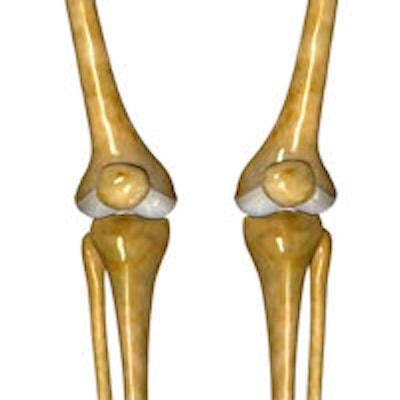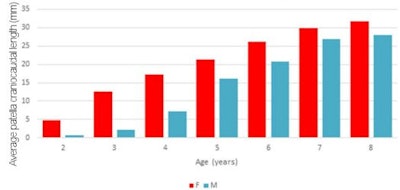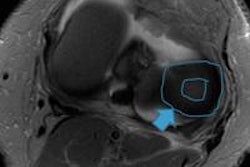
The patella ossifies in children between the age of 2 and 6, and there is a clear gender difference, with all girls having an ossified patella before their 5th birthday, according to researchers from a top London hospital. Moreover, girls have larger patella ossification centers compared with boys of the same age.
In children, the age of ossification of many of the bones throughout the skeletal system has been well defined, but no robust studies have confirmed when the patella ossifies, noted Dr. James Sarkodieh, a consultant general & musculoskeletal radiologist at Barts Health National Health Service (NHS) Trust in London.
The patella is the largest sesamoid bone in the body, lying within the quadriceps tendon/patellar ligament and forms part of the knee joint, and it is also the attachment and insertion for the extensor tendons of the knee and therefore provides an important functional role, he explained in an e-poster at the 2016 congress of the European Society of Musculoskeletal Radiology (ESSR).
"A number of disorders are characterized by absent or hypoplastic patellae. Therefore, there is a need to better define the expected age of patella ossification," he stated. "This will enable the reporting radiologist to identify an unexpected case in their reporting piles and will facilitate more accurate prediction in patients suspected of having a disorder that involves absent patellae or delayed patella ossification."
Under the microscope: 331 cases
Along with co-author Dr. Avinder Gobindpuri, a consultant radiologist at Frimley Health NHS Foundation Trust, U.K, who was formerly a radiology registrar at Barts, Sarkodieh reviewed the cases of 331 (199 male, 132 female) sequential knee radiographs of patients between the ages of 2 and 8. The time period covered was from January 2014 to April 2016, and cases were obtained through a search on the integrated PACS encompassing the three different emergency departments within the Barts Health NHS Trust.
Male and female average patella lengths
 Average patella craniocaudal lengths for age, comparing males and females.
Average patella craniocaudal lengths for age, comparing males and females.Patients with features of skeletal dysplasia, developmental disorder, and metabolic bone disease were not included in the study. To reduce the chance of occult chronic disease influencing the results, outpatient and GP requests were not included. For each radiograph, the presence and craniocaudal length of the patella ossification center were recorded. Data collection was performed by both authors.
The ranges for patella ossification were between 2 and 6 years for boys and 2 to 4 years for girls. Also, 96% of the female patellae were ossified before the girls' 4th birthday, compared with 34% of male patellae. All of the female patellae were ossified before the girls' 5th birthday, while 97% of boys' patellae were ossified before their 6th birthday and 100% by their 7th birthday. At all ages between 2 and 8, the girls had a larger ossified patella than the boys, and the greatest difference was between the ages of 2 and 4.
To view the authors' clinical images and full results presented at ESSR 2016, click here. Also, for further reading on this topic, they recommend the online page by Knipe H et al, Radiopaedia. Click here to access it.



















